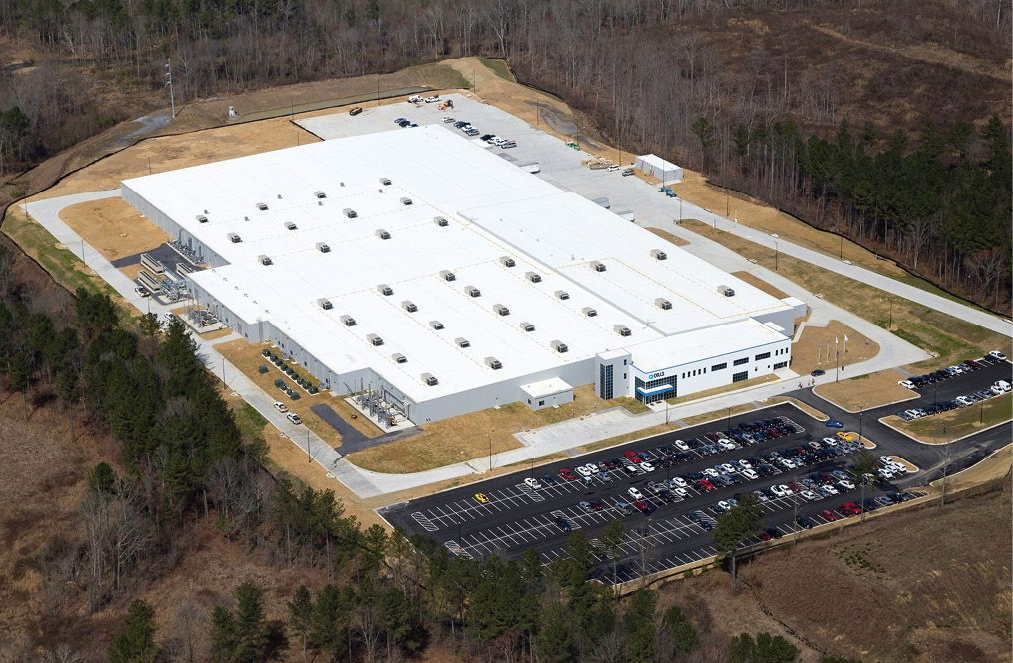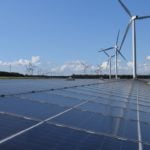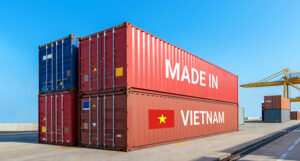Latest
Features , Editors’ Blog , Interviews , Long Reads
Anza anticipates additional adjustments in the coming weeks as manufacturers finalise their FEOC and ITC strategies. Chart: Anza.
Despite trade policy uncertainty, the price of solar modules in the US has remained fairly stable in the past three months, according to solar and storage supply chain platform Anza.
In its latest Domestic Content Report, Anza said the median price of domestically produced modules with US solar cells has only declined by 2% since April 2025, from US$0.5/W to US$0.49/W in July.
This article requires Premium Subscription Basic (FREE) Subscription
Unlock unlimited access for 12 whole months of distinctive global analysis
Photovoltaics International is now included.
Already a subscriber? Sign In
Regular insight and analysis of the industry’s biggest developments
In-depth interviews with the industry’s leading figures
Unlimited digital access to the PV Tech Power journal catalogue
Unlimited digital access to the Photovoltaics International journal catalogue
Access to more than 1,000 technical papers
Discounts on Solar Media’s portfolio of events, in-person and virtual
Or continue reading this article for free
Already a subscriber? Sign In
Modules assembled in the US with imported solar cells, on the other hand, have experienced a slight increase during that same period. The median price went from US$0.35/W in April 2025 to US$0.36/W in July, as shown in the image above.
Finally, the median price of imported modules has slightly decreased from April, with prices at US$0.255/W in July 2025.
However, looking further back, prices have risen from the lows of US$0.235/W registered at the beginning of the year. Overall, prices for the three categories – domestic modules with domestic cells, domestic modules with imported cells and imported modules – have all had a price increase since the beginning of 2025.
“Year‑over‑year, the premium for domestically produced cells versus imported modules widened to roughly $0.23/W, reflecting the market’s willingness to pay for tax credit, tariff, and duties certainty,” said Anza’s report.
Additional adjustments for solar manufacturers
Anza anticipates additional adjustments in the coming weeks as manufacturers finalise their foreign entity of concern (FEOC) and investment tax credit (ITC) strategies and regulation becomes clearer.
Mike Hall, CEO at Anza, recently told PV Tech Premium that the executive order signed days after the “One, Big, Beautiful Bill” introduced a fresh layer of anxiety for the solar industry (Premium access).
Among the latest developments in the short-term policy and tariff landscape are:
The ITC safe-harbour window, with projects required to begin construction by 4 July 2026 or begin commercial operations by the end of 2027
FEOC content thresholds for non-FEOC domestic content requirements: full credit with a 40% barrier in 2026, increasing to 60% by 2029
New Treasury guidance – requested in the executive order signed by US president Donald Trump in July – that would revise the “beginning of the construction” rules by 18 August 2025 and limit the safe harbour strategies
A new antidumping and countervailing (AD/CVD) petition against Indian solar companies and Chinese manufacturers with manufacturing plants in Indonesia and Laos and a Section 232 probe on polysilicon imports launched by the US Department of Commerce last month.
The US manufacturing landscape has not lain idle in the past few months, with plans continuing to shift every week, according to Anza.
“Several announced assembly lines remain on pause because of tariff reciprocity, FEOC uncertainty, and reduced production incentives under Section 45X, which begins phasing down in 2027,” said Anza.
Several manufacturing announcements have been made both before and after the reconciliation bill was signed into law in July, with mixed outcomes. On the negative side, struggling Swiss solar manufacturer Meyer Burger’s 1.4GW module assembly plant in Goodyear, Arizona, shut down in May this year.
On a more positive note, Canadian solar manufacturer Heliene opened a 500MW module assembly plant in Minnesota, while module manufacturer SEG Solar began shipments of its first utility-scale order from its Texas production plant last week.
Furthermore, materials science firm Corning recently acquired a 2GW module assembly plant in Arizona, from Chinese solar manufacturer JA Solar.
From the second half of 2025 until the end of 2027, Anza forecasts the number of domestic solar cell providers to nearly double from six to 11, while domestic module suppliers will only increase from 19 in H2 2025 to 22 in H2 2027. This is due to the recent tariff uncertainty that is prompting greater caution among suppliers, according to Anza.
Anza’s report concludes that there is an urgency to act now before there is a supply shortage, prices continue to increase and FEOC restrictions come into effect.
San Francisco Bay Area, USA
PV Tech has been running an annual PV CellTech Conference since 2016. PV CellTech USA, on 7-8 October 2025 is our third PV CellTech conference dedicated to the U.S. manufacturing sector. The events in 2023 and 2024 were a sell out success and 2025 will once again gather the key stakeholders from PV manufacturing, equipment/materials, policy-making and strategy, capital equipment investment and all interested downstream channels and third-party entities. The goal is simple: to map out PV manufacturing in the U.S. out to 2030 and beyond.
Returning for its 12th edition, Solar and Storage Finance USA Summit remains the annual event where decision-makers at the forefront of solar and storage projects across the United States and capital converge. Featuring the most active solar and storage transactors, join us for a packed two-days of deal-making, learning and networking.
PV Tech has been running PV ModuleTech Conferences since 2017. PV ModuleTech USA, on 16-17 June 2026, will be our fifth PV ModulelTech conference dedicated to the U.S. utility scale solar sector. The event will gather the key stakeholders from solar developers, solar asset owners and investors, PV manufacturing, policy-making and and all interested downstream channels and third-party entities. The goal is simple: to map out the PV module supply channels to the U.S. out to 2027 and beyond.
Read Next
Although residential solar in the US has lost its main tax credit, there is still hope that its popularity and economics could win the day.
Residential solar installations will slow in the US over the coming years, though long-term installations will remain significant, according to new research from energy analyst Wood Mackenzie.
Legislation withdrawing vital tax credits has plunged the US solar market into turmoil, putting project deployments and manufacturing at risk.
Brookfield Renewable earned more than US$400 million in FFO at its renewable generation assets in the second quarter of 2025.
Fluctuations in solar generation and energy prices during July’s heat dome in the US highlight the need for more nuanced data, says Solargis.
US solar PV recycling firm, Solarcycle, has produced a pilot module using 50% recycled glass from other decommissioned panels, which it says matches the performance of entirely new products.
Subscribe to Newsletter
Most Read
Features , Editors’ Blog , Interviews , Long Reads
Features , Interviews , Long Reads
Upcoming Events
Media Partners , Solar Media Events
https://www.pv-tech.org/solar-module-prices-in-the-us-remain-stable-amid-trade-uncertainty/





